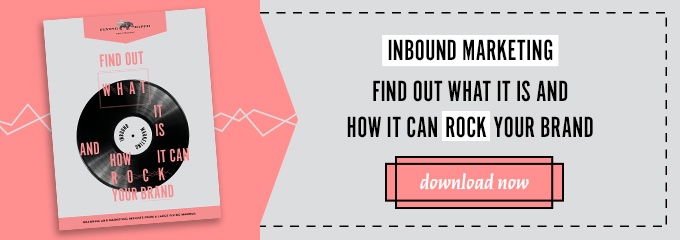 Marketing
Marketing
Passing the Chasm: How Long Does Inbound Take to See Results?
If you’re looking for running shoes, there’s one thing to keep in common: no matter how fancy the shoes are, they’re not going to make you run more than the ones you have right now. Shoes don’t make you run, you do.
Buying $300 running shoes made of yak fur and moon dust won’t mean a lick if you don’t get off the couch, turn off the reruns of “What’s Happening!!” and actually run.
Sure, you won’t see results overnight, but consistent exercise is how you get into shape. And inbound marketing is much the same.
But the common thread between the two remains—whether you’re trying to run a marathon or gain 100 new leads, how long does inbound take to see results?
Crossing the Chasm of Bummer
Web strategies are often tricky because the amount of work one has to do is “front-loaded”—there’s a lot more elbow grease required in the first few months of an engagement than the subsequent months. This usually leads to a bad case of the bummers when you look back at the fruits of your labor over the first few months. Chances are you’ll be disappointed.
And that’s OK. A huge part of inbound marketing is getting over this slump. We’ll call it the “Chasm of Bummer.”
If you’re starting from nothing, merely adding some simple content and calls to action will get you some return on investment. While this is great, it’s simply not sustainable.
There will be some minor disappointment before you see success. It’s how this whole thing works.
But—the million-dollar question—how long is this period? How long do we have to wait until we see results? How deep is this Chasm of Bummer?
The Short Answer
If you’re looking for a quick, compact answer to the question “how long does it take to see results from inbound marketing,” here it is:
It depends.
Because the first few months of an inbound engagement are front-loaded, getting tons great content written, designed, optimized and up on your site can take a while. And the faster you reach a critical mass of content, the less time you’ll spend in the Chasm of Bummer.
But inbound marketing is a marathon, not a sprint. We’re shooting to make your marketing evergreen, valuable and desirable. And this isn’t something that can be done overnight.
The Long Answer
Outbound marketing isn’t about instant gratification. On the contrary—it’s the total opposite.
To put it in cereal terms, inbound marketing is Grape Nuts: it’s healthy and provides enough energy to get you through a bunch of dull meetings. It’s an investment in the rest of the day.
Outbound marketing is like Cap’n Crunch: empty calories. You’ll be bouncing off the wall once you dig in, and you might get some leads from that TV commercial you put up. But when the sugar crash comes back to get you (it will!), you’ll be out in the cold. TV commercials don’t just re-air themselves, and people don’t seek them out when they want to learn more about your company.
To get to the bottom of the question “how long does it take to see results with inbound marketing?,” let’s look at some statistics. (For reference, the following stats came from this HubSpot report.)
Website Content: Websites with over 1000 indexed pages have double the traffic index of sites with fewer than 400.
Landing Pages: Websites with over 40 landing pages have 4 times the new leads than sites with 16 to 20 landing pages.
Blogging: Websites that publish over 15 blog posts per month have 3 times the traffic index of sites that publish only 3 to 5 times per month.
It’s a proven fact that the leads and traffic that inbound marketing brings are more quality than outbound marketing, but it does take time to achieve this effort. Strategy, content creation, design and execution takes a while.
So, with this in mind, how long does it take to see results from inbound marketing?
The amount you’re willing to spend and the timeframe you’re hoping to see results in are tightly correlated to your success.
The more pages, the more blog posts, the more landing pages—the higher the likelihood you’ll see success. But this only works if the timeframe you’re hoping to see success matches your budget. The more you’re willing to spend, the faster content can be created, and the faster you can reach your goal of success.
A typical inbound engagement lasts a year, and most people don’t see a significant uptick in leads, sales, etc. until month six or later. But the longer the posts live on your site, the more momentum they’ll build up.



